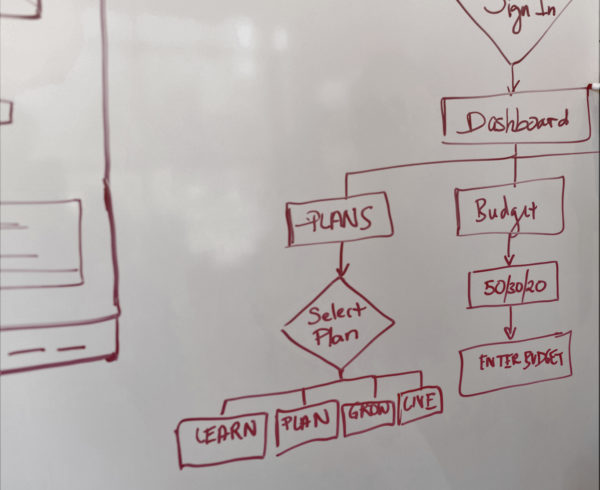Organisations need to invest disproportionately in defining the right talent strategy within their procurement and supply chain functions. This emphasis arises from how digital technologies are changing roles and required competencies in the sector.
These were the words of Kamen Govender, Partner: Next-Gen Operations at Letsema, as he delivered insights from his team’s latest research survey. The survey, presented on 23 October in Johannesburg to invited guests and survey respondents, is titled Is there Digital Momentum for Procurement & Supply Chain in South Africa?
Building on the work done last year by the Next-Gen Operations team, whose inaugural survey was titled How Real is Digital for Procurement & Supply Chain in South Africa? Govender highlighted the difference between sector leaders, and those lagging behind on their digital journey.
Six Archetypes were disseminated from respondent feedback, being Pioneers, Early Pioneers, Watchers, Explorers, Experimenters, and Traditionalists. Pioneers and Early Pioneers are those organisations leading the adoption and use of digital in procurement and supply chain, with Traditionalists being at the other end of the spectrum.
This year, 19% of survey respondent organisations were classified as Pioneers, with 15% Early Pioneers, 31% Experimenters, 8% Explorers, 12% Watchers and 15% Traditionalists. In 2018, Pioneers comprised 22% of survey respondents, Experimenters 43%, Watchers 13% and Traditionalists 22%.
The splitting of the Pioneer group was proof that digital had gained momentum in the procurement and supply chain space over the last year, with the drop in Traditionalists underlining this finding.
Pioneers and Early Pioneers: Effectively Aligning Strategies Across Their Organisations
Among the major drivers of Pioneers and Early Pioneers, characterising their digital lead versus other organisations, was a clear strategy and vision being in place for what they sought to do. Both Archetypes understood how they strategically wanted to use digital within their supply chain and procurement processes. In addition, this was incorporated into the organisation’s own strategic plan.
As Govender noted, there was a clear link between their corporate supply chain strategy and that of the entire organisation. That was a distinctive feature of these lead groups.

Where Traditionalists were concerned, they struggled on these aspects, with low stats of implementation, 75% lacking a digital investment plan while their digital strategy remained siloed compared to their corporate strategy.
Watchers, organisations that focus intently on understanding technologies prior to their usage, were among theknowledge leaders across the six Archetypes. However, only 67% had procurement and supply chain projects in the planning phase and no investment plans.
By comparison, Explorers were adopting a “learning by doing approach”, driving implementation aggressively. Explorers have focused their efforts on implementation, without necessarily feeling the need to have a deep level of understanding of digital transformation. Experimenters were not as bold as Explorers, limiting technological deployment to the pilot stage.
A characteristic shared by Explorers, Pioneers and Early Pioneers is that each Archetype have the means to access budget, clear lines of accountabilities for investment and buy-in from other parts of the organisation.
Shifting Barriers of Digital Entry
Of the barriers stifling digital’s momentum within local procurement and supply chain, a distinct change occurred between the 2018 and 2019 surveys.
In 2018, 70% of respondents said People were the most prominent barrier to digitisation, with Legacy data & processes second with 61% and Strategic alignment & leadership third with 52%. This year, People shares prominence with both Legacy data & processes and Strategic alignment & leadership, at 65% each respectively. Funding/Costs also rose significantly from 48% in 2018 to 58% in 2019.
Govender commented that the major barriers reaching similar levels of prevalence showed that as digital becomes more real in the sector, the complexity of the challenge rises as digital is engaged with within organisations.
The rise in the prevalence of Funding/Costs as a barrier appeared intuitively correct, according to Govender. Companies and organisations are operating in a difficult economic climate while there is fierce internal competition by different functions for resources.
Recommendations for Digital’s Use and Adoption
Taking the findings as a whole, Govender and his team arrived at several recommendations for organisations seeking to start or deepen their digital transformation journeys.
One is being increasingly strategic, linking the case for digital change to C-suite priorities. The Next-Gen Operations team noticed that a lot of respondents were unable to receive investment approval from their respective excos and leadership because could not answer this question: ‘What’s the value?’
The solution lies in linking the business case to what the sponsoring executive/s see as value. Govender said many business cases fall flat because the metrics being measured are not the same ones being used by the procurement and supply chain teams, and those in leadership whose approval is required. Aligning what “value” means is key.
Another recommendation focused on championing the use of Proof of Concepts. This way, even if leaders championing digital within the supply chain and procurement function cannot attain full funding, they can begin small, build confidence and gradually show value over time.
Added to this, procurement and supply chain functions should begin implementing ‘no regret’ programmes, which at their core are founded on good business decisions. These included investing in clean data, data governance, and efficient data design. Others include creating a vibrant culture internally that embraces digital technologies, and importantly, being deliberate regarding who your organisation’s IT and supplier partners are.
As Govender noted, an organisation’s digital journey is one that is never walked alone. Leading organisations were careful to choose and invest time with partners where a relationship can be nurtured. Symbiotic partnerships like these deliver agile and effective ecosystems for supply chain and procurement.
Govender concluded by saying, “Thinking is needed on shifting paradigms to the ‘next’ work force centre”. The Next-Gen Operations team had an interesting example of a company which sought to build a multi-functional shared service and highlighted how Robotic Process Automation skills could be developed as a team.
“Dealing with digital means having a skills building strategy. Finding talent is OK, but keeping talent is difficult.” Govender said. “We need to look for new sources of talent with transferable skills capable of being up-skilled to use and adapt to digital technology.”
The session concluded with some healthy debate, with a clear message arising from the discussion: “The longer organisations wait to begin their digital journey, the further they will be left behind.”
To find out more about what Letsema’s Next-Gen Operations team has to offer, email nextgen.operations@letsema.co.za, connect with our staff on LinkedIn or call 011 233 0000.









